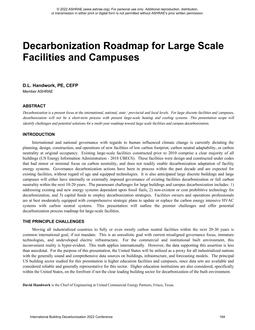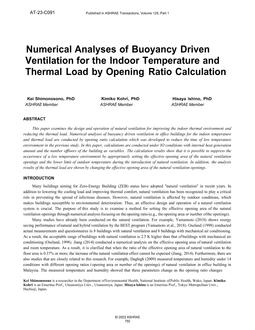
HA-77-02-1 — Tube Vibration in Refrigeration Machines
Flow-induced tube vibration in refrigeration machines can result in costly and unexpected failures. This paper will relate calculated vibrations in shell and tube heat exchangers to actual cases. The heat exchangers involved are those of centrifugal and absorption refrigeration machines. The type of tube damage to be reviewed includes tube wall wear at the support sheets, tube-to-tube wear from physical contact of adjacent tubes and fatigue. Tube failures resulting from operation in single phase and two phase flow regimes have been experienced in our industry. While the tubes of all heat exchangers vibrate to some degree, the boiling that occurs in a cooler or evaporator results in continuous vibration excitation of the tubes to a greater degree than that found in the typical refrigeration condenser. The incidence of flow-induced tube vibration failures has fortunately been very low, but these are relatively expensive failures to repair. There have been more failures in coolers than in condensers.
Adequate analytical methods to design a heat exchanger that will be free of flow-induced tube vibration problems do not exist. Certainly there are analytical methods and empirical criteria that the designer can employ to minimize the incidence of flow-induced tube failures. The subject is complex and our knowledge too incomplete to be able to totally eliminate this type of design deficiency. The problem that the designer must solve can be stated simply: Provide sufficient tube support to withstand flow-induced forces on the tubes. Unfortunately, the solutionto the problem is complex.
There are three types of flow-induced vibration phenomena. These are vortex shedding (1), fluid-elastic excitation (2), and turbulent buffeting (3). Vortex shedding has been recognized as a problem for many years. The other two mechanisms have been more recently recognized and can be important. In our industry, vortex shedding appears to be the primary tube vibration failure mechanism, so this review will be limited to this mechanism. The published literature that I am aware of reports no instance in which a tube was damaged by excitation originatingfrom the flow inside the tube.
Product Details
- Published:
- 1977
- Number of Pages:
- 7
- File Size:
- 1 file , 580 KB
- Product Code(s):
- D-HA-77-02-1
- Note:
- This product is unavailable in Russia, Belarus


